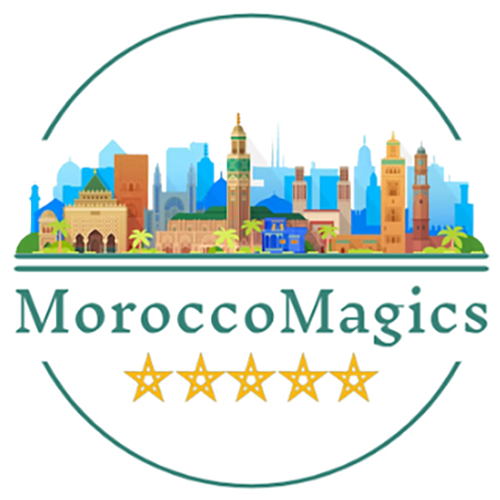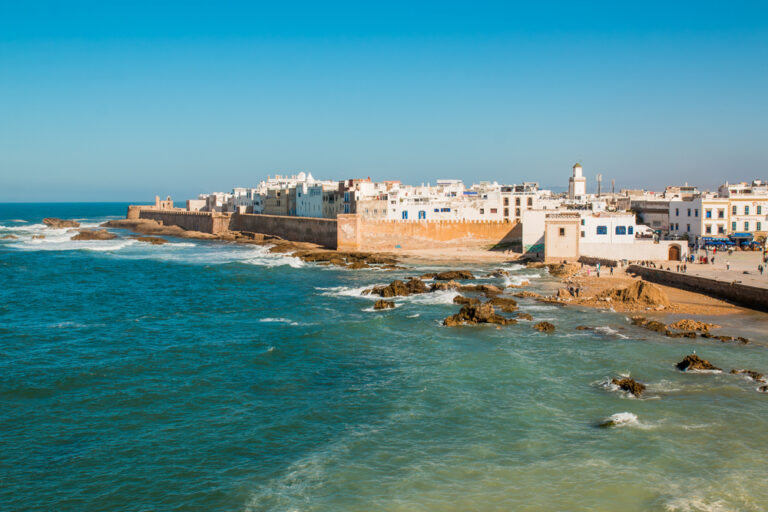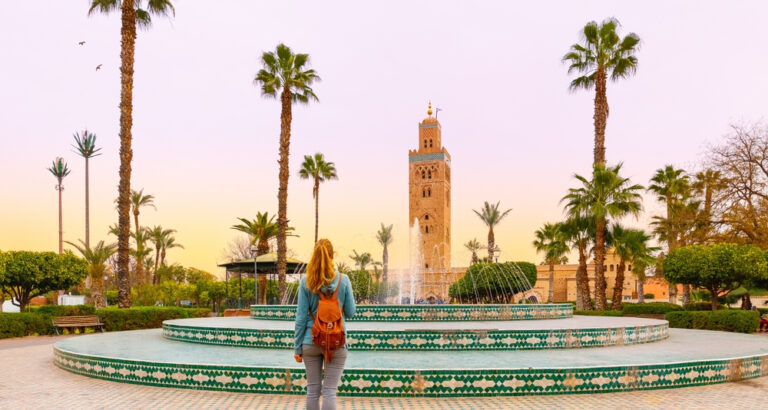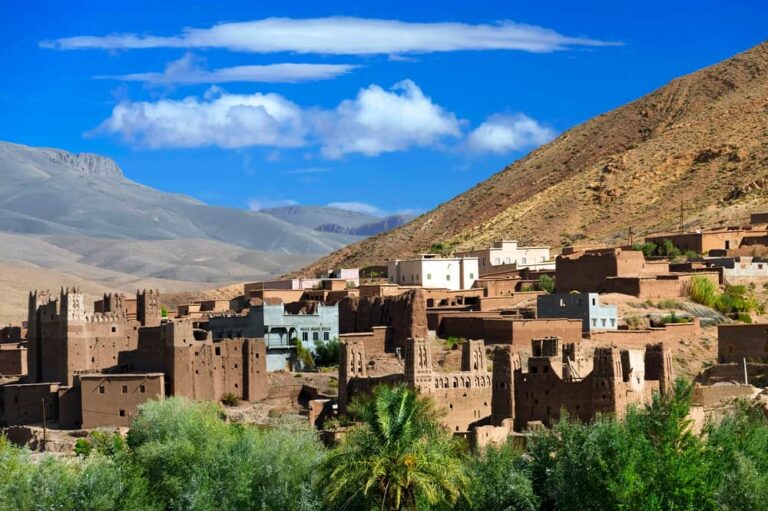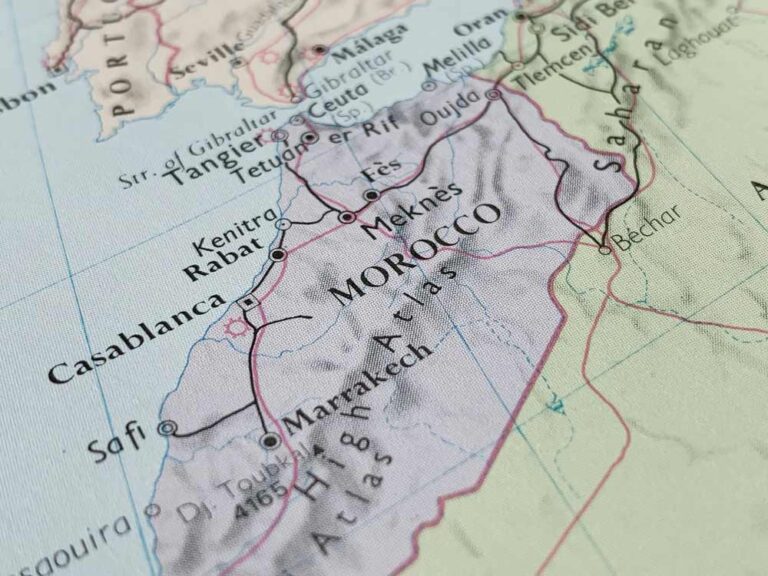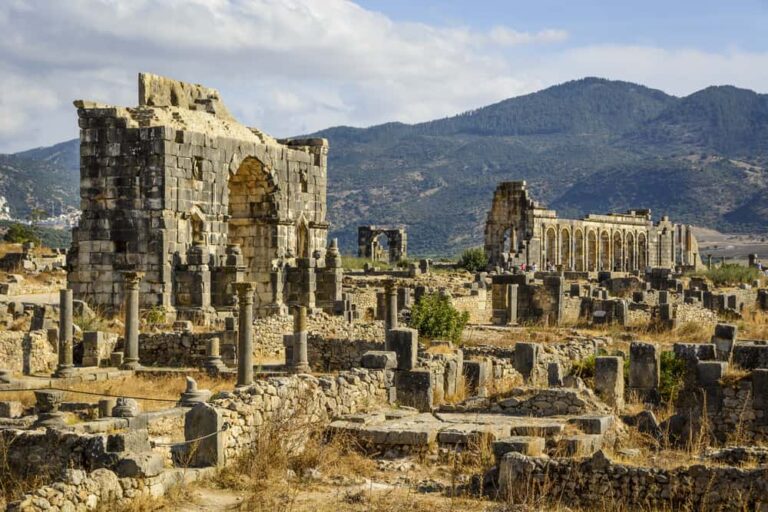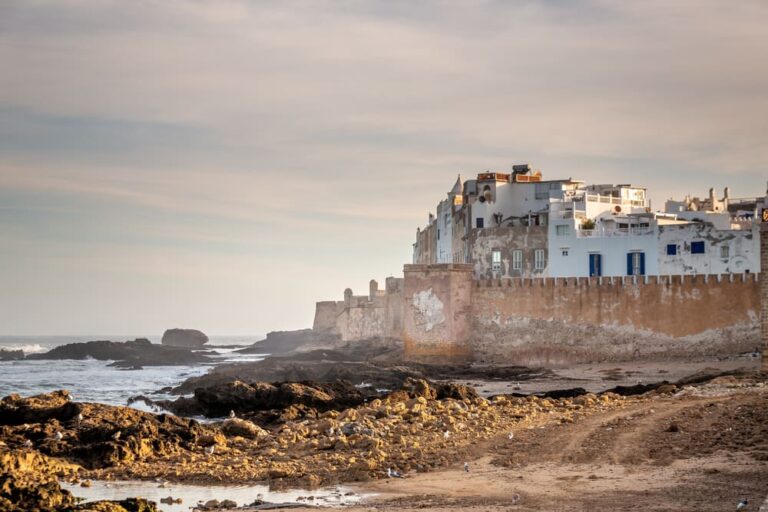The Imperial Cities of Morocco
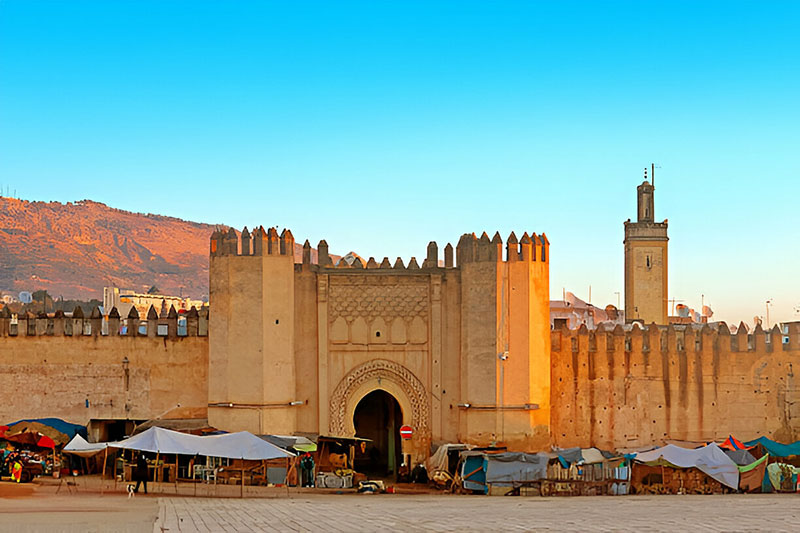
Morocco is a country rich in history and culture. Among its many treasures are the Imperial Cities of Fez, Marrakesh, Meknes, and Rabat. These cities are not just places on a map but the heartbeat of Morocco’s past and present. Each city has a unique story that tells us about its role in history, its beautiful buildings, and its vibrant culture.
Fez, often called the spiritual heart of Morocco, is famous for its ancient university and winding streets. Marrakesh, known as the Red City, dazzles with its bustling markets and historic palaces. Meknes, the city of a thousand gates, boasts grand monuments from the time of Sultan Moulay Ismail. Rabat, the capital city, blends old and new with its historic sites and modern buildings.
These cities have seen kings and sultans, traders and scholars. They have been centers of power, learning, and trade. Their architecture, from grand mosques to beautiful gardens, shows the creativity and skill of Moroccan builders. The culture in these cities, with festivals, music, and crafts, reflects the rich traditions of Morocco.
In the following sections, we will explore each of these Imperial Cities in more detail. We will learn about their historical importance, architectural wonders, and cultural treasures. Join us on this journey through time and space, and discover why these cities are so special.
The Historical Significance of the Imperial Cities
The Imperial Cities of Morocco hold a wealth of history. Each city played a key role in shaping the country. Their stories are filled with important events, grand structures, and cultural achievements. Let’s dive into the rich past of Fez, Marrakesh, Meknes, and Rabat.
Fez: The Spiritual Capital
- Early Days: Fez was founded in the 9th century by Idris I. It quickly became an important center for learning and culture.
- Growth: Under different rulers, Fez expanded. It became a bustling city with many mosques, schools, and markets.
- Medieval Times: Fez became famous for its scholars and artists. The city was a hub for science, philosophy, and art.
- University of Al Quaraouiyine: Established in 859, it is one of the oldest universities in the world. It still operates today.
- Religious Center: Fez is known for its religious importance. It has many mosques and is a place of pilgrimage.
- Cultural Heritage: The city’s medina (old town) is a UNESCO World Heritage site. Its narrow streets and ancient buildings are a treasure trove of history.

Marrakesh: The Red City
- Founding: Marrakesh was founded in 1070 by the Almoravid dynasty. It became a major trading post.
- Dynastic Capital: It served as the capital of several Moroccan dynasties. Each left its mark on the city.
- Key Events: Marrakesh witnessed many important events. These include the rise and fall of empires and the establishment of grand monuments.
- Market Hub: Marrakesh’s markets, known as souks, have been trading centers for centuries. Goods from all over Africa and Europe were traded here.
- Architectural Marvels: The city is home to beautiful palaces, gardens, and mosques. The Koutoubia Mosque and Bahia Palace are prime examples.
- Cultural Festivals: Marrakesh hosts various cultural events. The Popular Arts Festival is a celebration of Moroccan music, dance, and art.
Meknes: The Ismaili Capital
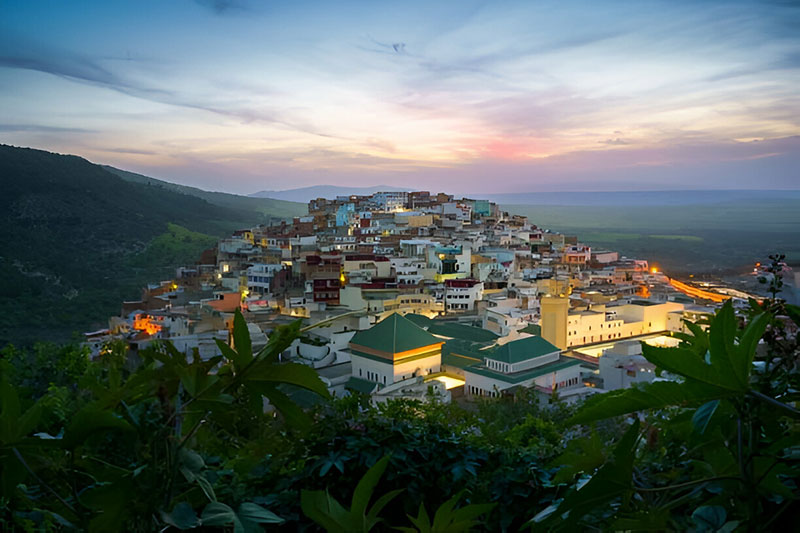
- Foundation: Meknes became prominent under Sultan Moulay Ismail in the 17th century.
- Military Stronghold: Ismail turned Meknes into a fortified city. He built strong walls and grand gates.
- Architectural Grandeur: Ismail’s reign saw the construction of many palaces, mosques, and gardens.
- Bab Mansour: This grand gate is one of Meknes’ most famous landmarks. It showcases intricate designs and craftsmanship.
- Heri es-Souani: These are massive granaries and stables built by Ismail. They highlight the city’s strategic importance.
- Moulay Ismail Mausoleum: The resting place of the sultan is a site of great historical and religious significance.
Rabat: The Political Capital
- Ancient Beginnings: Rabat’s history dates back to Roman times. It has been a strategic port and trading center.
- Modern Capital: In the 20th century, Rabat was chosen as Morocco’s capital. It became the political and administrative center.
- Key Events: Rabat has seen significant events in Morocco’s modern history, including independence and growth.
- Blend of Old and New: Rabat combines historical sites with modern infrastructure. It is a city of contrasts.
- Cultural Hub: The city hosts many cultural institutions, including museums, theaters, and galleries.
- Preservation Efforts: Rabat is committed to preserving its rich history. Many historical sites have been restored and maintained.
Architectural Marvels of the Imperial Cities
The architecture of Morocco’s Imperial Cities is stunning. Each city showcases unique styles influenced by different cultures and times. The buildings, gardens, and monuments tell stories of the past and show the creativity and skill of Moroccan builders. Let’s explore the architectural wonders of Fez, Marrakesh, Meknes, and Rabat.
Morocco’s architecture has been shaped by many influences. The Andalusian style, brought by Muslims from Spain, features intricate tilework, carved plaster, and beautiful courtyards. Moorish architecture, with its horseshoe arches and ornate decoration, is also prominent. These styles blend to create the unique look of Morocco’s buildings.
Each Imperial City has its special features. Fez is known for its old madrasas (schools) and intricate mosaics. Marrakesh stands out with its red sandstone buildings and lush gardens. Meknes is famous for its grand gates and royal stables. Rabat blends ancient ruins with modern designs, creating a city of contrasts.
Fez: Al Quaraouiyine University and Bou Inania Madrasa
Fez is home to some of the oldest and most beautiful buildings in Morocco. Al Quaraouiyine University, founded in 859, is the oldest university in the world. Its library and mosque are masterpieces of design. The Bou Inania Madrasa, built in the 14th century, is another gem. Its intricate tilework and carved wood make it a stunning sight.
Marrakesh: Koutoubia Mosque and Saadian Tombs
Marrakesh is full of impressive landmarks. The Koutoubia Mosque, with its tall minaret, is a symbol of the city. Built in the 12th century, it is a prime example of Almohad architecture. The Saadian Tombs, hidden for centuries, were rediscovered in 1917. They contain the remains of Saadian dynasty rulers and are adorned with beautiful tiles and carvings.
Meknes: Bab Mansour and Heri es-Souani
Meknes boasts some of the grandest monuments in Morocco. Bab Mansour, a massive gate built in the early 18th century, is famous for its intricate tilework and grand design. Heri es-Souani, the royal granaries and stables, showcase Sultan Moulay Ismail’s ambition. These structures highlight Meknes’ importance as a royal city.
Rabat: Hassan Tower and Royal Palace
Rabat blends historical and modern architecture. The Hassan Tower, an unfinished minaret from the 12th century, is a reminder of a grand mosque that was never completed. The Royal Palace, still used by the Moroccan king, combines traditional design with modern touches. Rabat’s architecture reflects its role as both a historical and political center.

Cultural Heritage and Traditions
The Imperial Cities of Morocco are not only famous for their history and architecture but also for their rich culture. Each city has vibrant traditions, colorful festivals, and unique crafts. The culture in these cities reflects the diverse influences that have shaped Morocco over the centuries.
Fez Festival of World Sacred Music
Fez hosts the Fez Festival of World Sacred Music every year. This event attracts musicians from all over the world. They come to perform music that celebrates peace and unity. The festival is held in beautiful venues across the city, such as the Bab Makina and the Jnan Sbil Gardens. It is a time when the city comes alive with songs and dances from different cultures.
Marrakesh Popular Arts Festival
Marrakesh is famous for the Marrakesh Popular Arts Festival. This festival showcases traditional Moroccan arts, including music, dance, and theater. It is held in July and features performances in the El Badi Palace and the streets of the city. The festival is a great way to experience the vibrant culture of Marrakesh.
Fez: Tannery and Pottery
Fez is known for its traditional crafts. The tanneries, where leather is dyed using natural methods, are a must-see. The Chouara Tannery is the largest and oldest in the city. Fez is also famous for its pottery, especially the blue and white Fassi ceramics. These crafts are made by skilled artisans using techniques passed down through generations.

Marrakesh: Souks and Handicrafts
The souks (markets) of Marrakesh are a shopper’s paradise. They are filled with stalls selling spices, textiles, jewelry, and more. One of the most popular souks is the Souk Semmarine, known for its colorful displays. Marrakesh is also known for its handicrafts, such as carpets, lanterns, and leather goods. These items are handmade by local artisans and are perfect souvenirs.
Meknes: Artisan Crafts and Local Markets
Meknes is famous for its artisan crafts. The city’s markets are filled with handmade items like pottery, carpets, and metalwork. The Heri es-Souani market is a great place to find these treasures. Meknes is also known for its wood carving, with intricate designs that decorate doors, furniture, and more. These crafts reflect the city’s rich artistic heritage.
Rabat: Crafts and Modern Art Scenes
Rabat blends traditional crafts with modern art. The city is home to many art galleries and museums, such as the Mohammed VI Museum of Modern and Contemporary Art. Rabat is also known for its traditional crafts, including weaving and embroidery. The Rabat medina is a great place to find handmade rugs and textiles. The blend of old and new makes Rabat a cultural hub.
Broader Historical Context
The Imperial Cities of Morocco are not just important on their own. They also played key roles in the bigger picture of Morocco’s history and the region. Each city has connections to important trade routes, dynastic changes, and cultural exchanges. Let’s explore the broader historical context of Fez, Marrakesh, Meknes, and Rabat.
Morocco’s Imperial Cities were central to many ancient trade routes. These routes connected Africa, Europe, and the Middle East. Traders brought gold, salt, spices, and other goods through these cities. Fez and Marrakesh were especially important as trading hubs. They connected the Sahara Desert with the Mediterranean Sea, allowing goods and ideas to flow between regions.
Morocco has been ruled by many dynasties over the centuries. Each dynasty left its mark on the Imperial Cities. For example:
- Almoravids and Almohads: They built Marrakesh and made it a capital.
- Marinids: They expanded Fez and built many schools and mosques.
- Alaouites: They established Meknes as a capital under Sultan Moulay Ismail.
These dynastic changes shaped the cities’ architecture, culture, and influence. The rise and fall of empires brought new ideas, people, and traditions to Morocco’s Imperial Cities.
Today, the Imperial Cities are popular tourist destinations. Visitors from around the world come to see their historical sites, beautiful buildings, and vibrant culture. Tourism is a big part of the economy in these cities. It provides jobs and supports local businesses. For example:
- Fez: Known for its ancient medina and university.
- Marrakesh: Famous for its markets and palaces.
- Meknes: Attracts visitors to its gates and mausoleums.
- Rabat: Combines historical sites with modern attractions.
Preserving the historical sites in the Imperial Cities is important. Restoration projects help maintain the beauty and significance of these places. For example, the medinas of Fez and Marrakesh are UNESCO World Heritage sites. Efforts to restore and protect them ensure that future generations can enjoy their history.
At the same time, these cities are modernizing. New buildings, roads, and services are being developed. This blend of old and new makes the Imperial Cities unique. They honor their past while looking forward to the future.
Contemporary Relevance of the Imperial Cities
The Imperial Cities of Morocco are not just historical landmarks; they are also vibrant, modern places that continue to grow and develop. These cities blend the old with the new, preserving their rich heritage while embracing modern advancements. Let’s explore their contemporary relevance and how they balance history with progress.
Tourism is vital to the Imperial Cities. Visitors from around the globe come to experience their beauty and history. This tourism brings money and jobs, helping the local economy. The cities are famous for their landmarks:
- Fez: Attracts tourists to its ancient medina and university.
- Marrakesh: Draws visitors to its lively markets and beautiful palaces.
- Meknes: Known for its grand gates and historic sites.
- Rabat: Combines old ruins with modern attractions.
Efforts to preserve historical sites are crucial. Restoration projects keep these cities beautiful and meaningful. For example, the medinas of Fez and Marrakesh are protected as UNESCO World Heritage sites. These projects ensure that the history of these places is not lost.
The Future of Morocco’s Imperial Cities
Looking ahead, sustainable tourism is key. The cities are working on ways to welcome tourists without harming their historical sites. This includes managing visitor numbers and ensuring that tourism benefits the local community. Efforts are being made to promote eco-friendly travel and preserve natural resources.
The Imperial Cities face challenges as they grow. Balancing development with preservation is not easy. There are also social and economic issues to address. However, these challenges come with opportunities. By investing in education, infrastructure, and sustainable practices, the cities can thrive.
Fez, Marrakesh, Meknes, and Rabat will continue to be important parts of Morocco’s story. Their rich history and bright future make them fascinating places to visit and study.
Conclusion
The Imperial Cities of Morocco are truly special. Fez, Marrakesh, Meknes, and Rabat each tell a unique story through their history, architecture, and culture. These cities blend the past and present, welcoming tourists while preserving their heritage.
Fez, with its ancient university, Marrakesh’s vibrant markets, Meknes’ grand gates, and Rabat’s mix of old and new, each offers something unique. Visiting these cities is a journey through time, revealing Morocco’s rich history and bright future. Explore and appreciate the beauty and legacy of these remarkable places.
